R.M.S. Titanic and the Thousand Islands
by: Rick Casali
You might ask what the R.M.S. Titanic and the Thousand Islands have in common? As we know, the Titanic sank to the bottom of the Atlantic on its maiden voyage from Southampton to New York City, on April 15, 1912. So it never was in the waters of the St. Lawrence River. But there are some connections that link the Thousand Islands to the most famous ship in history. Please bear with me as I draw the connections. Coincidently, the stained-glass dome over the grand stairway in Boldt Castle has an eerie resemblance to the glass dome and great staircase on the Titanic. Each time I visit the castle, I recall the photos or movies of the “Ship of Dreams.”

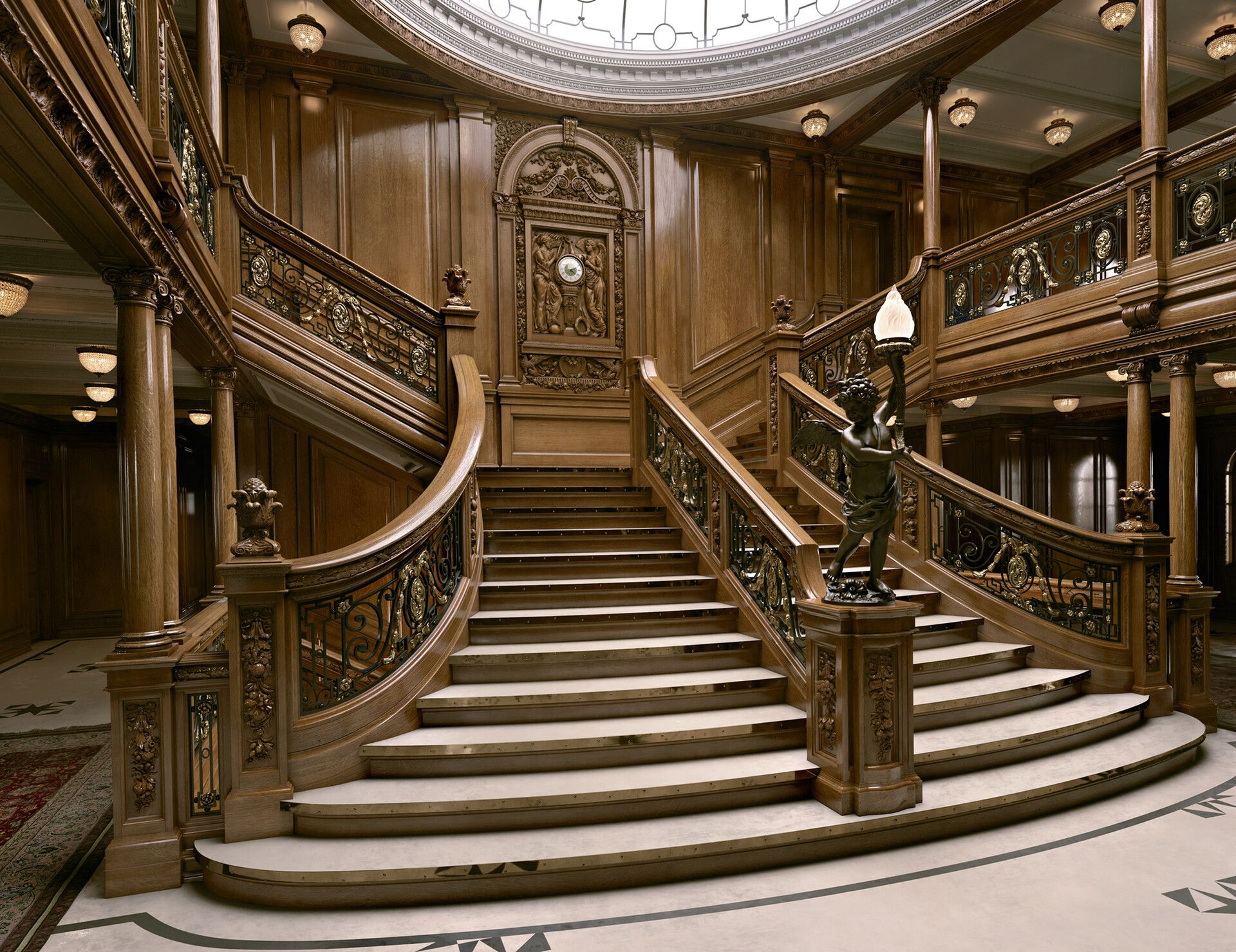
The Gilded Age:
As we know, the cottages and castles built in the Thousand Islands from the late 1890’s to about 1920 were products of The Gilded Age. American industrial growth, creation of wealth, expansion of social activity outside the home, and recreation on the water were all part of the Gilded Age. Wealthy families sought escape from the heat and crowding in US cities during the summer season. So wealthy Americans migrated to Newport, RI, The Adirondacks, NY, and the Thousand Islands. They brought with them their high society lifestyle and staff to support this way of living.
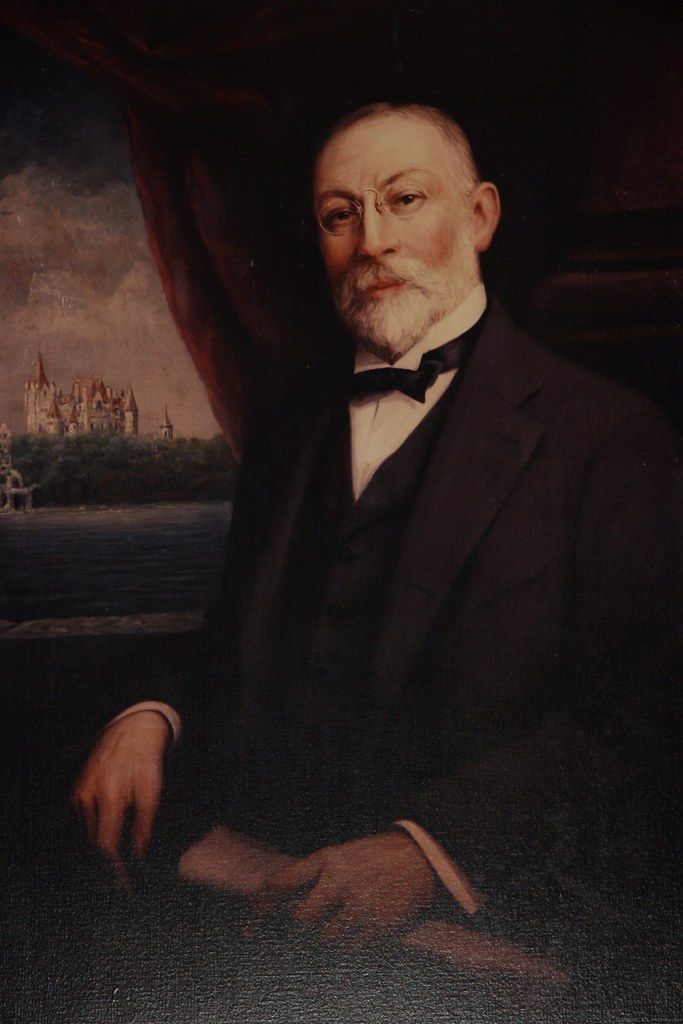
The Thousand Islands were a perfect escape for the wealthy families from New York City, Philadelphia, Chicago, Cleveland, and Pittsburgh. Rail travel made the islands a convenient summer destination. Hoteliers like George Boldt realized that they could invite their clients from their urban hotels to cooler northern locales, such as the North Country. Thus, we saw guests from New York City and Philadelphia summering in the restorative waters of the St. Lawrence River. And the hotels in exchange could be supplied with flowers, poultry, fruits, vegetables, and other foods grown on the farms on Wellesley Island and other regions of the North Country.
The erection of waterfront hotels in the Thousand Islands catered to the influx of wealthy visitors. Hotels in Clayton, on Round Island, on Wellesley Island, and in Alexandria Bay sprang up to meet the demand of the Gilded Age vacationers. Soon to follow were country clubs, yacht clubs, and boat yards to service the vessels of the rich residents. Golf, tennis, polo, boat racing, and fishing were the favorite pursuits of the summer residents of the North Country.
Captains of industry built castles and cottages in the Thousand Islands. Unfortunately, not all were welcome back in the 1900 era. Jewish Americans were not welcome at some of the yacht clubs and country clubs, so wealthy Jews built their own large cottages on Cherry Island, thereby creating their own enclave. Among them were Isador Strauss and Abraham Abraham – the founders of Macy’s Department Store. While these discriminatory policies could not stand today, during this time they were tolerated.
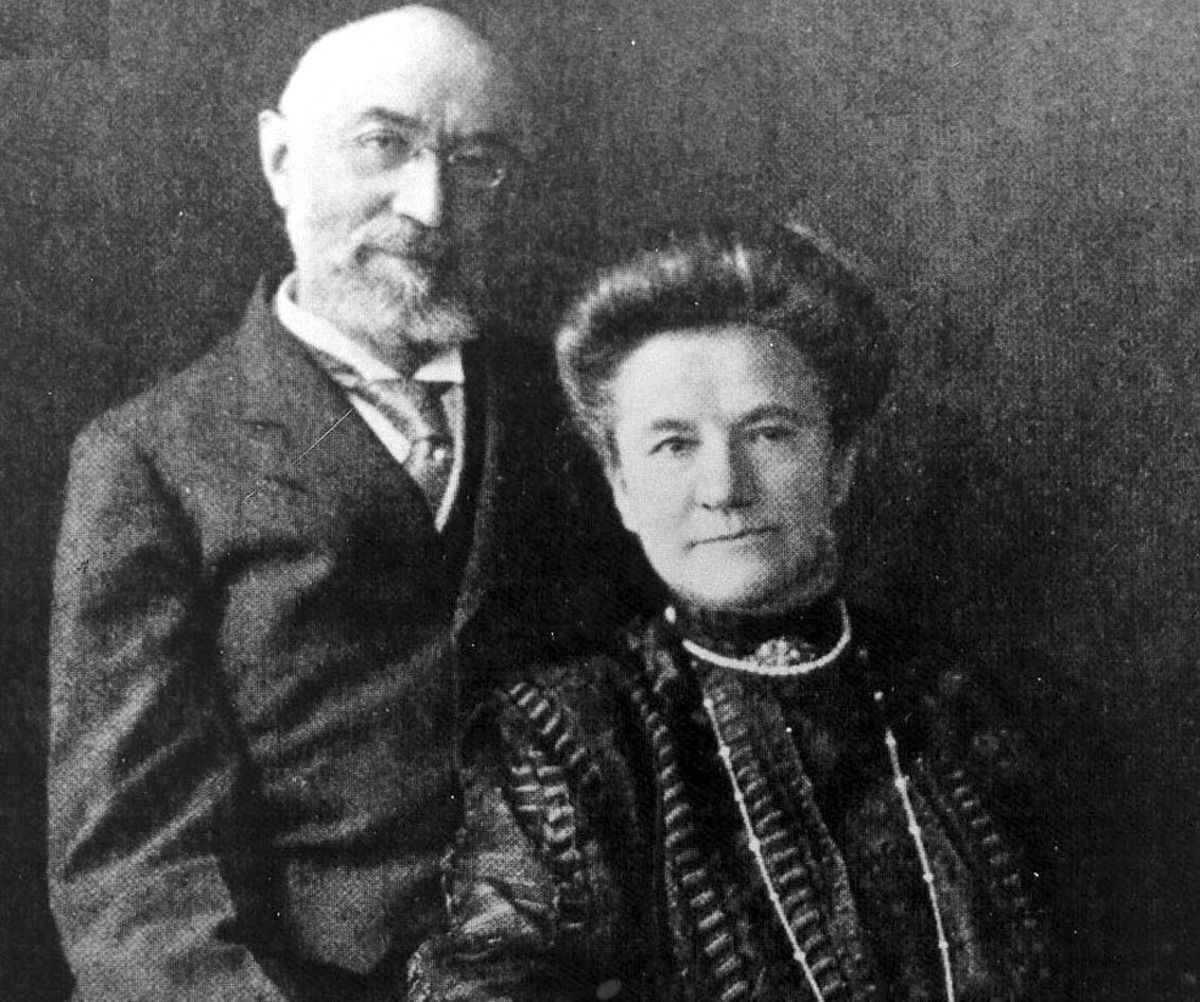
As American and European standards of living soared during the Gilded Age, they expected their modes of transportation to become more luxurious as well. Rail travel became more comfortable and accommodating. Automobiles were also coming into an era of luxury and style. Steam ships got larger, faster, and more luxurious, to meet the tastes of the very rich. Ocean-going steam ships, under the flags of the White Star Line and the Cunard Line, offered private suites for wealthy passengers during trans-Atlantic crossings. Along with elegant staterooms came gourmet menus, on-board swimming pools, gymnasiums, steam baths, and card & smoking rooms. This is where the R. M. S. Titanic enters our story.

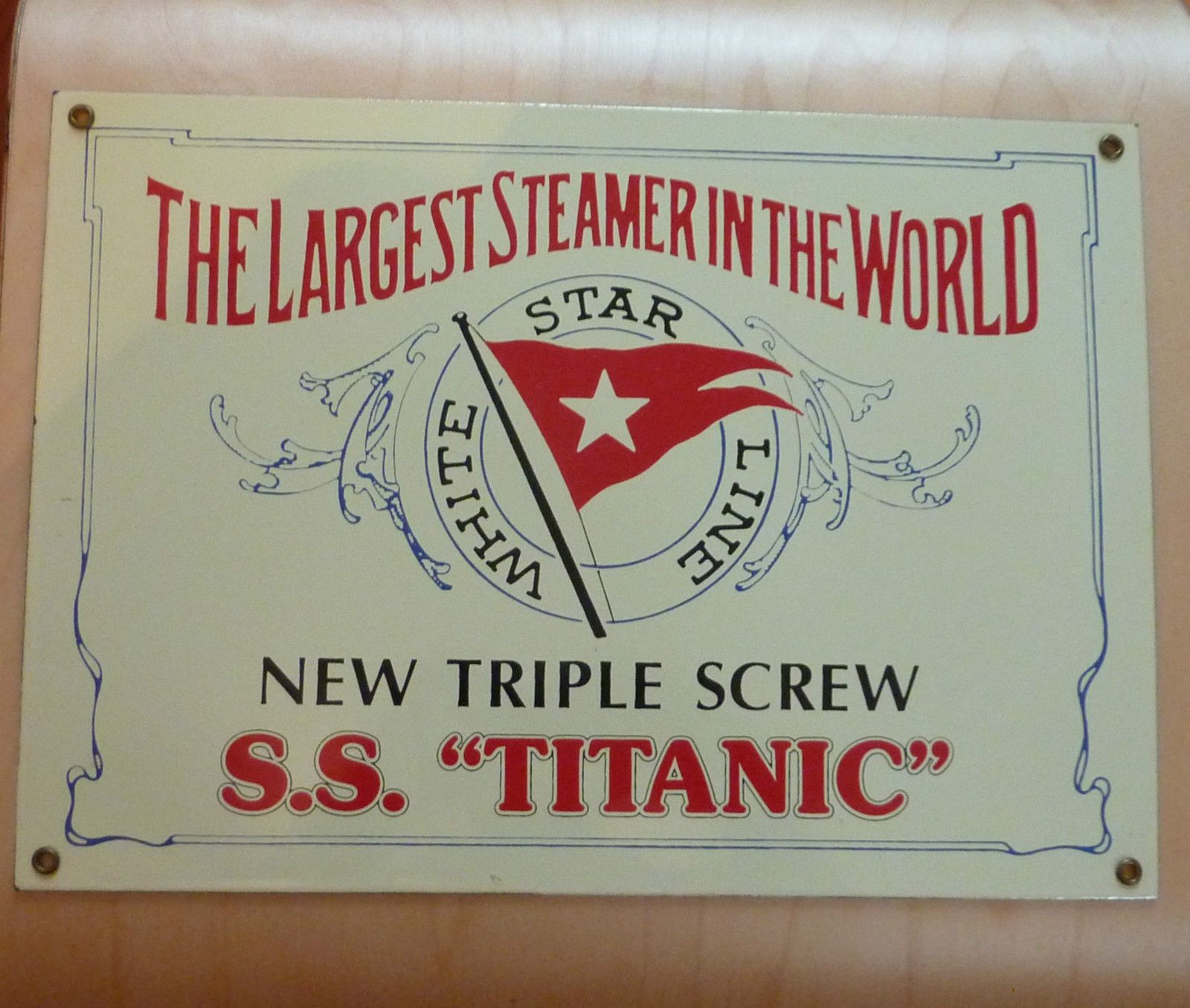
R.M.S. Titanic
Just like the hotels, castles, and fancy cottages in the Thousand Islands, steamship companies catering to the trans-Atlantic trade had to offer fancier accommodations, food, and recreation. The White Star Line met this demand with three new, large, and lovely steamships. Those ships were the Olympic, Titanic, and Britannic. White Star spared no expense (except for lifeboats) to attract wealthy clients to the new triple-screw ships. Large suites, ensuite bathrooms, verandas, European restaurants and menus, and first-class service attracted the rich and famous. Among them was the richest man in America, John Jacob Astor and his new bride Madeleine, as well as Isador Strauss and his wife Ida. A Who’s Who in American society booked crossings on the maiden voyage of Titanic. (Noteworthy is that financier J.P. Morgan, Guglielmo Marconi of wireless fame, and Milton Hershey of chocolate fame missed the maiden sailing of the Titanic.)
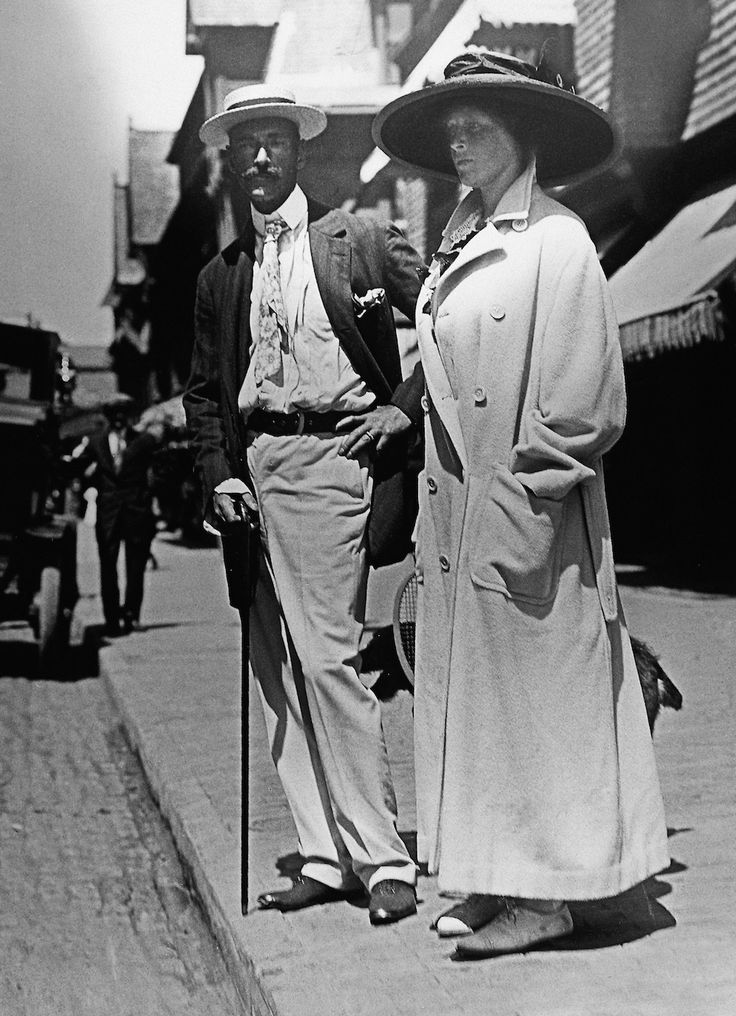
In first class at dinner time, gentlemen dressed in black tie and ladies in fine Parisian gowns. Waiters served fine wine and champagne, dinners were five or six courses, and violin music accompanied the dinner meals. After dinner, gentlemen retired to the smoking and card rooms, while ladies retired to the lounges for evening tea and conversation. Life was good on board these steamships.
As we all know, the pride of the White Star Line, R.M.S. Titanic, struck an iceberg on her maiden voyage on the night of April 14th, 1912, and sank early the next morning. On board were 2,207 passengers and crew. Many of the passengers were from high society in America. Also on board were many hundreds of second- and third-class passengers, who were emigrating to America to start a new life.
Among those passengers who perished that fateful night were John Jacob Astor, as well as Nathan and Ida Strauss. When Astor’s crushed body was recovered from the icy Atlantic it was covered with soot, and it was concluded that he died when the forward funnel from the ship tumbled into the sea. Astor had over $2,500 in cash as well as jewelry on his person.
Astor owned the Waldorf-Astoria Hotel at which Thousand Island land baron George Boldt was the proprietor. Astor and Boldt were very close in business and otherwise. When the US Senate launched an investigation of the sinking of the Titanic, George Boldt took an active role in pushing for the facts of the tragedy. In fact, the formal hearings started at the Waldorf-Astoria Hotel on April 19th, at the urging of Mr. Boldt. Boldt was motivated to get to the cause of the sinking as many of his friends and customers had been aboard that fateful night.
Cherry Island residents Isador and Ida Strauss elected to not enter a lifeboat on Titanic, and instead opted to go down with the ship, on that morning of April 15th. They had been married for 55 years, and Ida refused to leave Isador on the ship with the other men. So, the famous couple sadly perished that night. I surmise that the Strauss’ were regular guests at the Waldorf-Astoria Hotel for dinners and other festivities. Therefore, the Boldt’s and Strauss’ were likely good friends in the city as well as on the River. No doubt the Thousand Islands lost two of its most famous summer residents with the sinking of the Titanic.
The Wideners and Thayers of Philadelphia, long-time customers at Boldt’s Bellview-Stratford Hotel, were also lost on the Titanic. It’s unclear if they had ever visited the Thousand Islands as guests of George Boldt. These wealthy passengers had strong connections to George C. Boldt.
End of The Gilded Age
Historians say that the sinking of the R.M.S. Titanic signaled the end of The Gilded Age. The loss of the “unsinkable ship,” “the ship of dreams,” and the largest man-made moving object (at the time), was said to mark of the end of the age of innocence. Up until the sinking, high society was considered safe and above harm. With the large loss of life, among those lost some of the richest and most well-known members of society, the sinking of Titanic marked the loss of a way of life. Of course, WW I and The Great Depression contributed to a shift in life in America and beyond.
Just as George Boldt abandoned his future on Heart Island and his lovely castle with the death of his wife, the sinking of the most famous ship in history changed our outlook in life. And as Charles Emery elected to not go back into his Calumet Castle with the death of his first wife, Titanic’s death transformed the way of life for many. Wealth did not prevent shifts in lifestyle.
On the oceans and on our River, life got somewhat simpler and more casual. People had fewer servants. They became more independent. Ladies and gentlemen could drive their own boats or cars without a captain or chauffeur. And driving race boats was now considered acceptable for fine men and women.
Fire & Ice
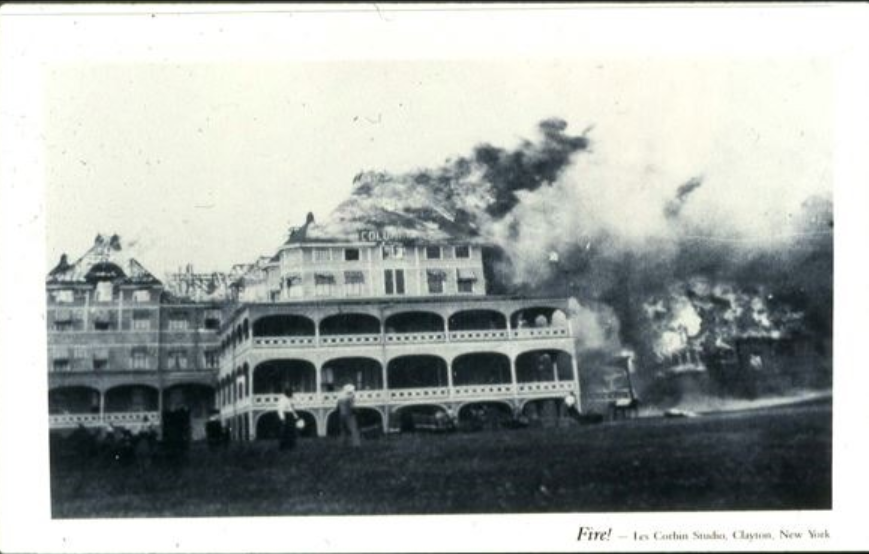
While ice was the enemy for the Titanic, fire has been the enemy of the Thousand Islands. Fire has forever transformed life on our River. The loss of so many fancy hotels, fine cottages, and even a castle due to fire changed life in our region. None of these hotels built of wood was rebuilt. As a result, travel habits and tourism on our River changed rather dramatically. Wealthy Americans found other vacation spots or built their own cottages on our many islands. Consider unlucky Charles Emery who not only lost his huge hotel on Round Island, but years later his castle on Calumet was consumed by fire.
Had Boldt Castle been finished and enjoyed by George and his family, we could expect the level and quality of service and accommodation would have equaled what Titanic had to offer. Boldt certainly set the bar high, just as the owners of The White Star Line had done. Of course, we will never know how the level of service and social activities at the castle would have evolved. At a minimum, Mr. Boldt would have insisted on first-class service, wonderful lodging, fine wine, fine food, and fresh flowers. Had the castle been completed, had George Boldt lived longer, and had The Great Depression not occurred, life would have been different. I guess we will never know, but it’s fun to think about the “what ifs.”
Author’s note
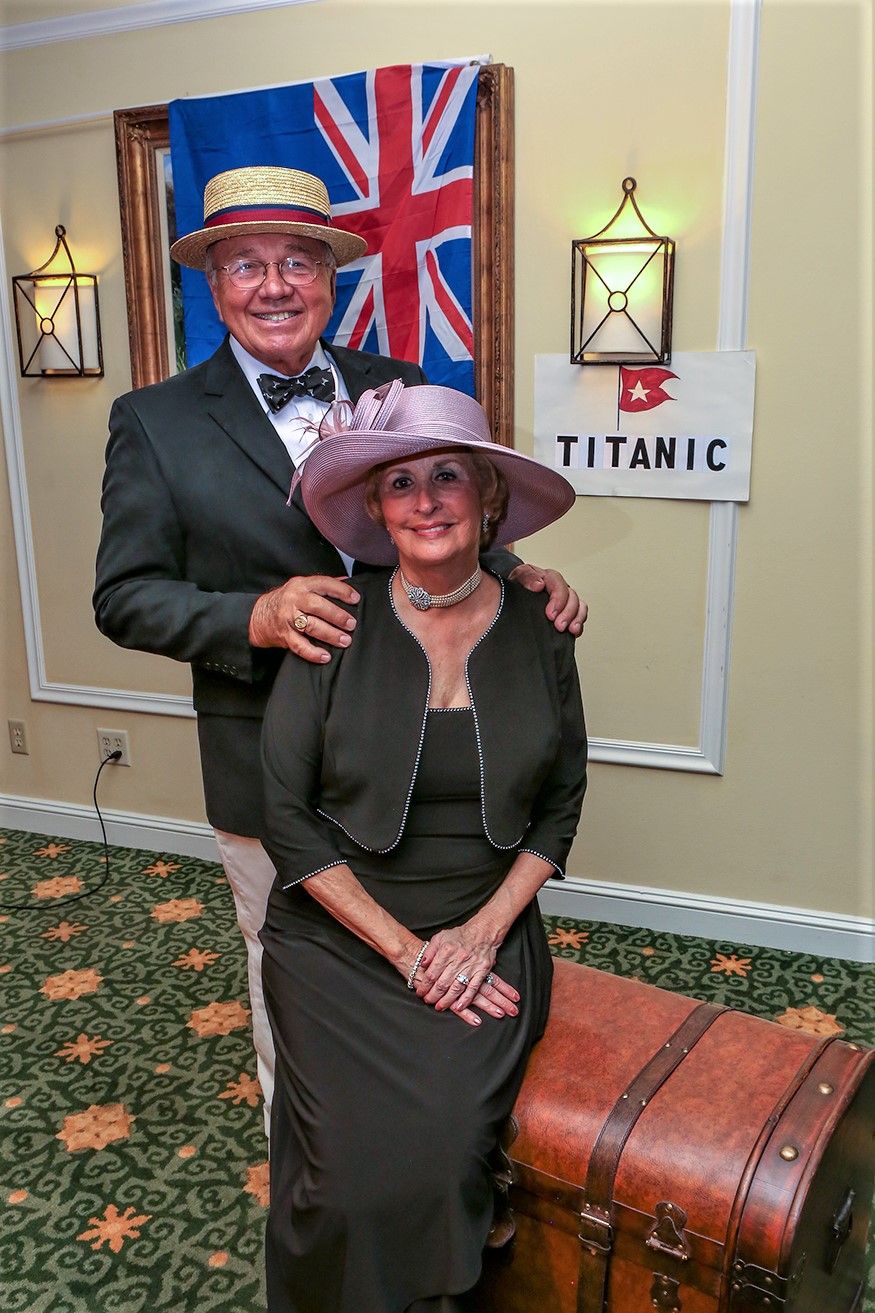
Two of my passions are the Thousand Islands and RMS Titanic. I have spent many years becoming a student of this ship, as well as living in the Thousand Islands. Anne and I have hosted six black-tie tribute dinners on April 14 each year to remember the Titanic. We offer a prayer for the passengers and crew, and we serve the first-class menu from that fateful night. They are memorable evenings. I hope that this article was both interesting and informative. R. A. C.
by Rich A. Casali
Rick Casali is a resident of Wellesley Island. During his youth, from 1947 to 1976, his parents had a cottage on Grindstone Island named The Orchards. Rick now splits his time between Stuart, FL and the River. He worked for Columbia Gas System for 29 years and ran their Washington, DC office. Then in 2000, he started brokering boats and yachts, and continues as a broker with North Point Yacht Sales. Rick and his wife Anne cruise the River in a Seaway 24 Seafarer named "Miss Annie", and they live on Tennis Island.
Be sure to see more of Rick Casali's tributes and reviews. He has now written 20 articles for TI Life, and they are not only interesting but also provides an important historical review of River life. Be sure to have a look!


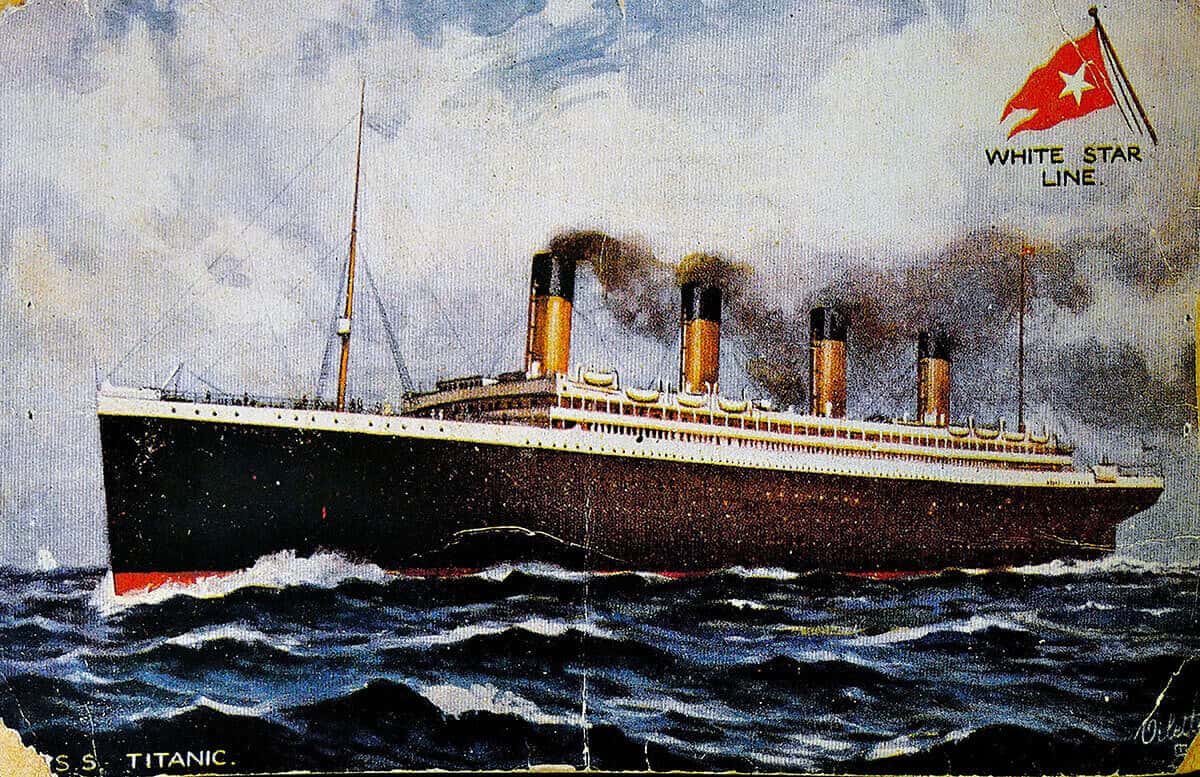
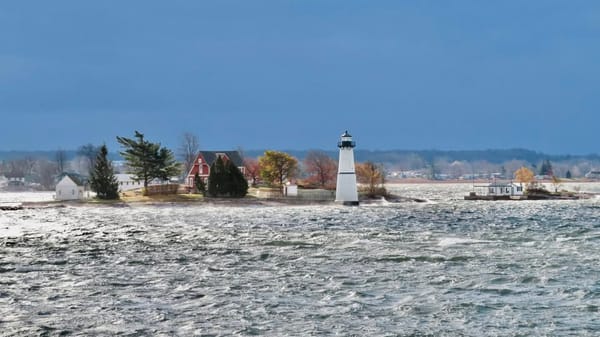

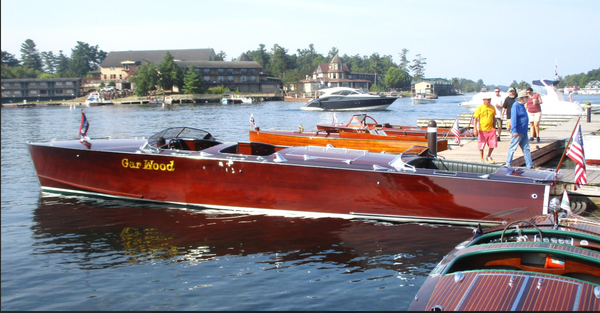
Please click here if you are unable to post your comment.